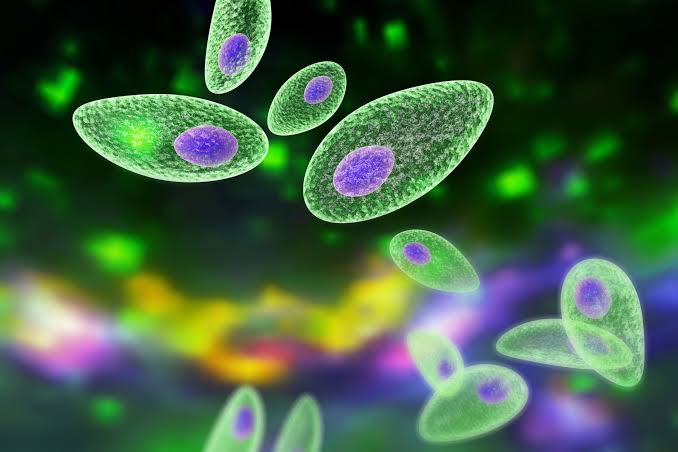Toxoplasma gondii is a tiny parasite that can infect animals, including humans. Cats are the primary hosts where the parasite reproduces. It can spread to other animals and humans through contaminated food, water, or handling cat litter that contains the parasite.
In healthy people, infection often doesn’t cause any noticeable symptoms or may feel like a mild flu. However, for people with weakened immune systems (like those with HIV/AIDS) or pregnant women, the parasite can cause more serious problems.
It’s pretty common worldwide, and estimates suggest many people have been exposed to it at some point. Infections can happen from eating undercooked meat or not washing fruits and vegetables properly. It’s also important to be cautious with cat litter boxes, especially during pregnancy.
To prevent infection, it’s recommended to cook meat thoroughly, wash produce well, and practice good hygiene, especially around cats and their litter boxes.
Overall, while Toxoplasma gondii isn’t usually a big problem for healthy individuals, it’s important for vulnerable groups to take precautions to avoid potential complications.
Toxoplasmosis: Understanding the Risks and Management during Pregnancy
Toxoplasmosis, caused by the parasite Toxoplasma gondii, presents significant concerns for pregnant women due to its potential transmission to the unborn child. This infectious disease, though typically asymptomatic in healthy individuals, can lead to severe complications if contracted for the first-time during pregnancy. The parasite spreads primarily through ingestion of contaminated food or contact with infected cat feces. While the overall incidence during pregnancy is low, proper hygiene and food safety measures are crucial to prevent infection. Diagnosis involves specialized blood tests, though routine screening is not standard. Prompt detection and treatment with antibiotics can help mitigate risks to the fetus, emphasizing the importance of healthcare monitoring throughout pregnancy.
Toxoplasmosis is an infectious disease caused by the parasite Toxoplasma gondii. This microbe, like other microbes, exists widely in the environment, with some being beneficial and others harmful to human health. Toxoplasma gondii, specifically, can lead to the symptomatic disease known as toxoplasmosis.
The terms “toxoplasma” and “toxoplasmosis” are often used interchangeably, but they refer to different aspects of the infection. Toxoplasma denotes the parasite itself, while toxoplasmosis describes the clinical manifestation of the infection.
During pregnancy, contracting toxoplasmosis for the first time can pose significant risks. If a woman becomes infected before pregnancy, her body typically develops immunity, protecting both herself and her unborn child. However, if infection occurs during pregnancy or just before conception, the immune system may not have sufficient time to mount a defense. This increases the likelihood of complications during pregnancy and potential health issues for the baby after birth.
The incidence of toxoplasmosis during pregnancy is relatively low. For instance, in the UK between 2008 and 2012, there were approximately 190 reported cases among pregnant women, although the actual number may be higher. Moreover, even if a woman does contract the infection for the first time while pregnant, the transmission rate to the baby is estimated to be around 1 in 10,000 births in the UK.
Toxoplasmosis primarily spreads through ingestion of contaminated food, such as undercooked meat, unpasteurized dairy products, or through contact with cat feces or contaminated soil. Notably, the mere act of petting or having a cat as a companion does not increase the risk of infection. Transmission from mother to baby can occur via the placenta, but not through direct person-to-person contact.
Diagnosis of toxoplasmosis during pregnancy involves specialized blood tests, although routine screening is not universally performed as part of prenatal care. If diagnosed with a recent infection, additional tests may be required to assess the risk of fetal transmission, which is rare but can lead to severe consequences depending on the timing of infection during pregnancy.
Symptoms of toxoplasmosis in otherwise healthy individuals are often mild or absent, resembling flu-like symptoms such as fever, muscle aches, and fatigue. However, these symptoms are nonspecific and may not necessarily indicate toxoplasmosis without diagnostic confirmation.
Certain groups, including pregnant women with occupational exposure to livestock or individuals with compromised immune systems, are at higher risk of contracting toxoplasmosis. Prevention measures include thorough cooking of meat, washing hands after handling raw meat or gardening, and avoiding contact with potentially contaminated materials.
Treatment for toxoplasmosis in pregnancy involves antibiotics tailored to the stage of pregnancy and the severity of the infection. Babies born to mothers with toxoplasmosis are monitored closely postnatally for signs of infection and associated health issues, such as vision or developmental problems.
Overall, while toxoplasmosis poses risks during pregnancy, timely diagnosis, and appropriate management can mitigate adverse outcomes for both mother and child.
Epidemiology in Pakistan:
The search results in 26 publications involving 10,924 people and 2611 seropositive cases. The toxoplasmosis seropositivity rate was higher in women (25.44%) as compared to men (21.48%) and was statistically significant (p < 0.001). Furthermore, seropositivity was high among people with direct contact with cats, who consumed uncooked meat and raw vegetables, had poor education, and lived in rural areas.
Highest number of cases reported in the world:
France regularly reports the highest number of cases of congenital toxoplasmosis, most likely due to its sensitive surveillance system, which includes the screening of pregnant women, follow-up of individuals testing negative in order to detect infection during pregnancy, and laboratory confirmation of any cases of congenital toxoplasmosis detected during the process, including asymptomatic cases.

Fatima Khan, Mphil Parasitology, Quaid-i-Azam University, Islamabad.














